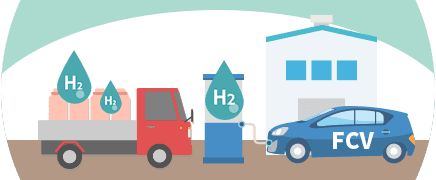
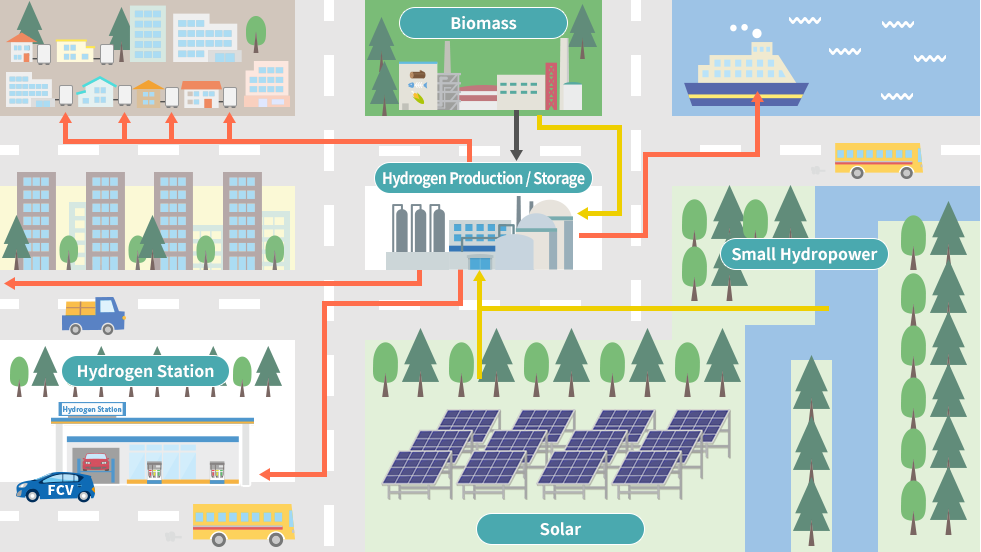












Hydrogen brings about a new form of energy.
Hydrogen energy produced by utilizing local resources is stored and transported as hydrogen gas, and can be used for various purposes such as power and heat sources for homes and offices, and fuel for automobiles.
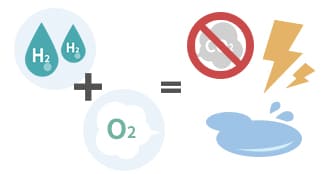
No CO2 Emissions During Power Generation
Fuel cells generate electricity and heat through the reaction of hydrogen and oxygen. Water is the only byproduct and CO2 is not emitted during power generation.
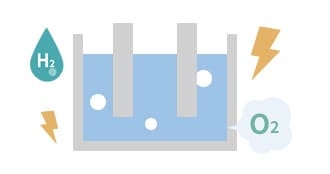
Generated From Various Resources In Various Ways
Hydrogen can be obtained by electrolysis of water, and can also be extracted from hydrocarbons.
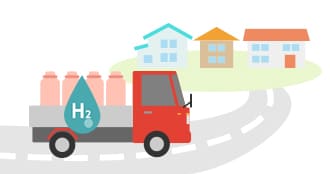
Storage and Transportation
Hydrogen can be stored in a gaseous state to be used when necessary. It is also possible to transport it from the place of production to the place of use.

Local Production
for Local Consumption
By using hydrogen produced locally, energy security and self-sufficiency can be improved. It can be used as an energy source in the event of a disaster.
Hydrogen can be generated from water and electricity.
Clean hydrogen fuel is achieved through the use of renewable energy to generate it.
Hydrogen can also be generated by chemical reactions of fossil fuels, purification of byproduct gas such as in coke ovens, and methanol and methane gas reformation.
However, none of these methods is environmentally friendly because the reaction generates high temperature waste heat and carbon dioxide.
In addition, while environmentally friendly renewable energy is clean electricity, it has problems of being unstable because its output fluctuates depending on the time of day and the climate, and the installation location is limited.
By combining renewable energy and hydrogen, it will be possible to further accelerate the introduction of renewable energy, use clean energy, and create a self-sufficient society.
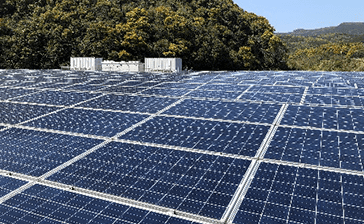
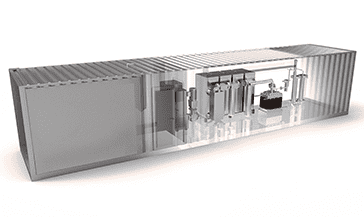
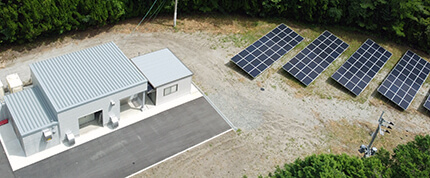
IWATEC is working to demonstrate the production of renewable energy hydrogen with the aim of building a hydrogen supply chain.
A polymer electrolyte fuel cell (PEFC or PEM fuel cell) is a device that generates electricity and heat by the chemical reaction between hydrogen and oxygen.
Since water is the only byproduct in this chemical reaction, NOx, SOx, particulate matter (PM), etc., which cause air pollution, are not discharged and the exhaust gas is clean.
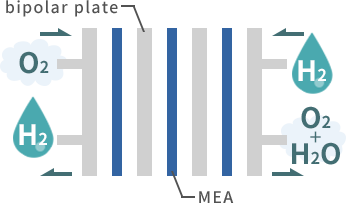
It consists of a polymer ion exchange membrane sandwiched
between a cathode and an anode.
It uses an acidic polymer membrane as an electrolyte and has a platinum-based electrode. PEM fuel cells operate at a relatively low temperature (less than 100 degrees Celsius) and power can be adjusted to meet demand.
In addition to powering small cars and forklifts, PEM fuel cells are widely used in residential applications since the waste heat can be utilized in a combination of heat and power (CHP).
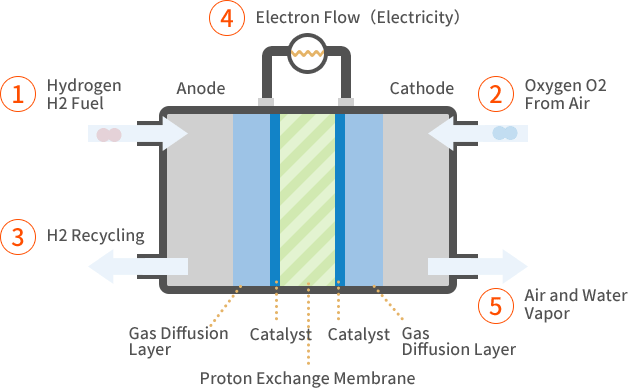
Fuel Cell Stack
What We Can Offer